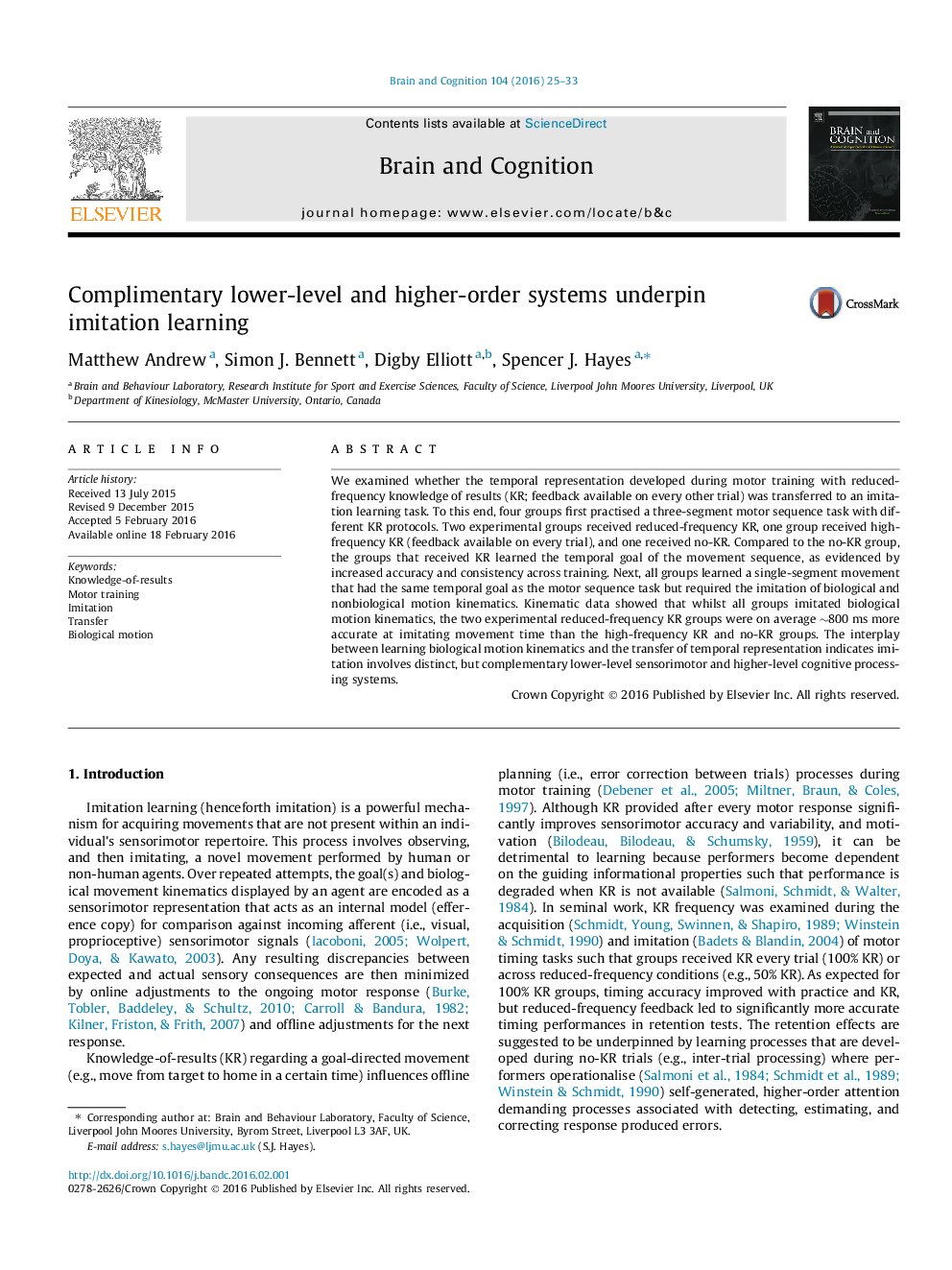| Article ID | Journal | Published Year | Pages | File Type |
|---|---|---|---|---|
| 924130 | Brain and Cognition | 2016 | 9 Pages |
•Can a temporal representation be transferred from motor, to imitation, learning?•All experimental groups learned timing following motor training.•Reduced-KR groups were more accurate at reproducing movement time during imitation.•All groups imitated biological motion kinematics.•Lower-level sensorimotor and higher-order cognitive systems underpin imitation.
We examined whether the temporal representation developed during motor training with reduced-frequency knowledge of results (KR; feedback available on every other trial) was transferred to an imitation learning task. To this end, four groups first practised a three-segment motor sequence task with different KR protocols. Two experimental groups received reduced-frequency KR, one group received high-frequency KR (feedback available on every trial), and one received no-KR. Compared to the no-KR group, the groups that received KR learned the temporal goal of the movement sequence, as evidenced by increased accuracy and consistency across training. Next, all groups learned a single-segment movement that had the same temporal goal as the motor sequence task but required the imitation of biological and nonbiological motion kinematics. Kinematic data showed that whilst all groups imitated biological motion kinematics, the two experimental reduced-frequency KR groups were on average ∼800 ms more accurate at imitating movement time than the high-frequency KR and no-KR groups. The interplay between learning biological motion kinematics and the transfer of temporal representation indicates imitation involves distinct, but complementary lower-level sensorimotor and higher-level cognitive processing systems.
